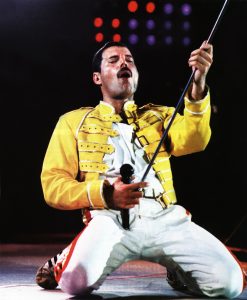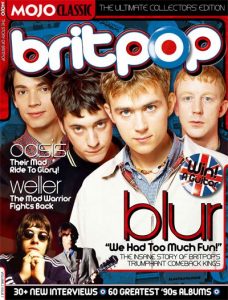 Whether or not audiences were tolerant of “glam rock’s play with gender,” glam was still seen as “provocative” (48) in the US and Britain – and deliberately so. This provocation was unequivocally political: Auslander notes that in the former, the “tendency to dress lavishly and use makeup” was seen to be a sign of “sexual abnormality” (49). I find it interesting that contrary to the criticisms of Ton Steine Scherben for not being ‘serious’ enough and using, for example, glitter in their performances, glam rock was political because of its lavishness and rejection of so-called seriousness. Unlike with Ton Steine Scherben, where showmanship and artistic personality were seen to dilute the band’s political nature, it was these elements that glam artists weaponised in their provocations of audiences/critics. I’m aware of the differing contexts (glam being commercial and Scherben being anarchist/’underground’, glam upsetting conservative audiences and Scherben frustrating left-wing ones), but it is nevertheless still interesting to see different aspects of an artist’s performance being read as political and the power of ‘lavish’ dress to agitate.
Whether or not audiences were tolerant of “glam rock’s play with gender,” glam was still seen as “provocative” (48) in the US and Britain – and deliberately so. This provocation was unequivocally political: Auslander notes that in the former, the “tendency to dress lavishly and use makeup” was seen to be a sign of “sexual abnormality” (49). I find it interesting that contrary to the criticisms of Ton Steine Scherben for not being ‘serious’ enough and using, for example, glitter in their performances, glam rock was political because of its lavishness and rejection of so-called seriousness. Unlike with Ton Steine Scherben, where showmanship and artistic personality were seen to dilute the band’s political nature, it was these elements that glam artists weaponised in their provocations of audiences/critics. I’m aware of the differing contexts (glam being commercial and Scherben being anarchist/’underground’, glam upsetting conservative audiences and Scherben frustrating left-wing ones), but it is nevertheless still interesting to see different aspects of an artist’s performance being read as political and the power of ‘lavish’ dress to agitate.

In his later discussion of mod culture’s influence on glam, Auslander notes that mod culture had a “strong homosexual element” (58-9). If mod revivals have included late-70s affiliation with skins/skinhead culture and the ‘lad’ culture of 90s britpop, why is it that these subcultures have been so reliant on a perceived heterosexual masculinity? Does the popular memory of mod culture overlook its queer elements?
